A chat on traditional cool drinks of Kerala this hot summer season
During the very hot Meenam-Medam months of Kerala, it would be really horrible to have a short walk outside home at noon or for young kids to play outside in the summer holidays. There was a time when only lemon juice or butter milk was given to kids during the hot summer, and now it’s the time of carbonated drinks. Water kept in earthen containers used to give a natural coolness, both to mind and body, enough to give more satisfaction than those refrigerated drinks.
Those days have already faded, and new generation is not also familiar with many of such traditional and local drinks prepared by mothers and grandmas at homes. Many of such secret recipes have not been properly recorded or passed to future generations properly. Whom should we blame? Where we lost the link with those old days? Why can’t we return to those days of natural drinks? Let’s have a small chat on some of the local cool drinks of Kerala, which were once a part of every household, very healthy with magical power to quench your thirst easily.
Sambharam or buttermilk – The very traditional Kerala drink
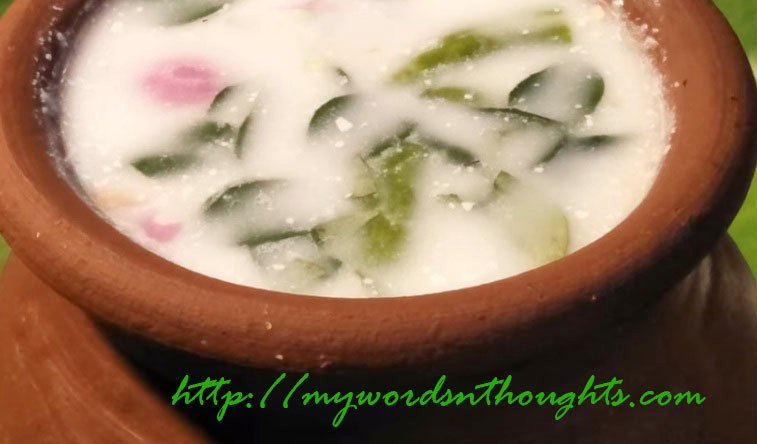
When a kid reaches home after playing outside in the hot Meenam month, his mother welcomes him with some buttermilk, kept in an earthen pot. In the early mornings, grandma boils milk and cools it for younger kids. Drinking water from an open well after eating gooseberry is still nostalgic to many. To watch Kalyana Saugandhikam Ottanthullal or Rukmini Swayamvaram Kathakali staged at a temple during the festival season with a cup of Chukku Kaapi (dry ginger coffee) in hand during the summer season along with friends give many sweet memories to ponder. Many of us share some of such sweet memories from past, those glorious childhood days which present generation kids may not be familiar with. Those pleasant memories are sufficient to chill our minds and souls even during hot summers.
Mothers ask their kids to drink double quantity of water during summer seasons, because dehydration of body can increase the body temperature. It can lead to many health issues. For the same reason, mothers used to prepare buttermilk in the early mornings. Curd from packets was once not used for this purpose. There was a time when cows were grown in almost every household, and natural milk and curd were only used. Buttermilk is prepared from curd, by completely removing the butter content. Otherwise buttermilk, locally called Sambharam won’t taste nice.
In the prepared buttermilk, double quantity of water will be added. Two or three shallots, a little ginger and curry leaves, a little green chilli or bird’s eye chilli (Kanthari) and lemon leaf (optional) plus a little crystal salt will be crushed and added to buttermilk to enhance the taste. Nowadays coriander leaves are also used while preparing this drink. Grandmothers always have a special interest to crush lemon leaves while preparing Sambharam, which adds an extra flavour to the drink. If water stored in earthen pots overnight is used for preparing buttermilk, it adds a natural coolness, and no refrigerated drinks can replace its quality or satisfaction! Its taste is so pleasing, and chills our mind and soul like sandal wood paste applied all over the body. It reduces our body temperature, reducing body heat internally. In normal cases, buttermilk prepared this way is a healthy drink for those people with health issues too, such as diabetics, cholesterol etc.
Elder people instruct young kids not to play outside during noon time when heat is terrible. Yet children may not listen to such advices. It’s a child fantasy to collect mangoes, gooseberries and similar fruits from courtyard along with friends during summer days, and such memories won’t fade easy too. Most of such fruits are free of pesticides, as they are naturally grown. Children love to sip juice from fresh mangoes, and it can never compensate with the taste of cut mango pieces after removing skin. Also by doing so, it enhances the health of teeth and gums. In short, it’s a natural and easy dental care technique. Also local mangoes like Pulichi, Kilichundan, Moovandan and Chakkara taste best only by sipping its juice by mouth.
Kids also follow a procedure to eat local mangoes. As soon as they get one mango from courtyard or fields, they place it inside the palm, and press it well from all sides. Then they bite it at the stalk, and sip its juice using mouth. It’s one of the best natural drinks offered by mother earth, and a form of blessings to younger ones too. Still now a few families still love to give traditional drinks like lemon juice or buttermilk for their guests during summers, following a few traditions given by older generations. Natural squashes like Nannari Serbat, Naruneendi Serbat etc are also prepared at home.
Mango is effective to reduce body heat
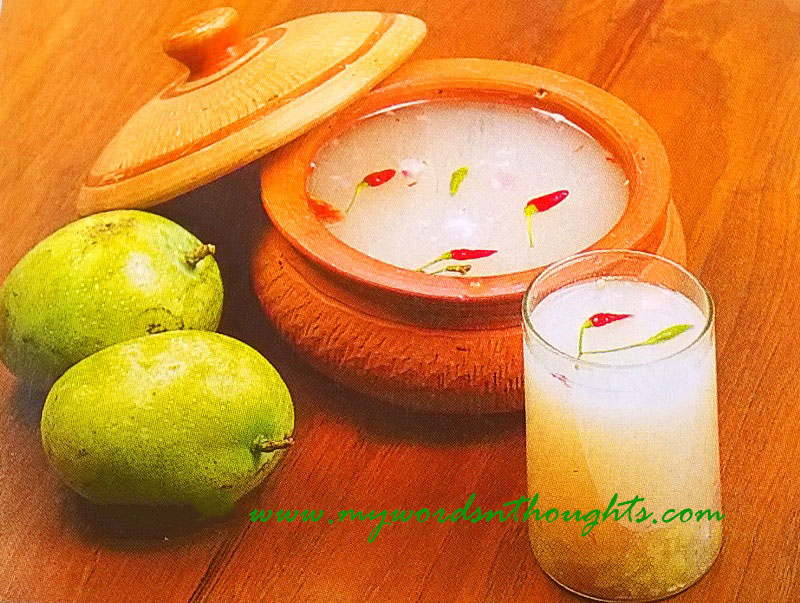
Maanga Sambharam
A well ripen Moovandan mango can be used to prepare Mango Buttermilk (Maanga Sambharam), and here is its recipe. Only 6 ingredients are required to prepare this easy drink. Clear rice starch after boiling rice, shallots, bird’s eye chilli (kanthari) and salt are used for its preparation. Mango, shallots, chillies and salt are crushed together and mixed with rice starch (Kanji Vellam) to prepare Maanga Sambharam. As it’s told, ‘Ushnam Ushnena Shanti’, ‘hot’ mangoes can effectively used to reduce heat. Tender mango pickle (Kanni Maanga Achar) can be used as combo with buttermilk & salt.
There was a time when kids used to gather as folk beneath mango trees during summer holidays during early mornings to collect mangoes. They also love to collect mangoes together, squeeze its juice in a container and add a little sugar to it, if mangoes are a little bit sour. But this practice was not encouraged by grandmas, as sugar increases thirst.
Paanakam – A local drink now rarely seen
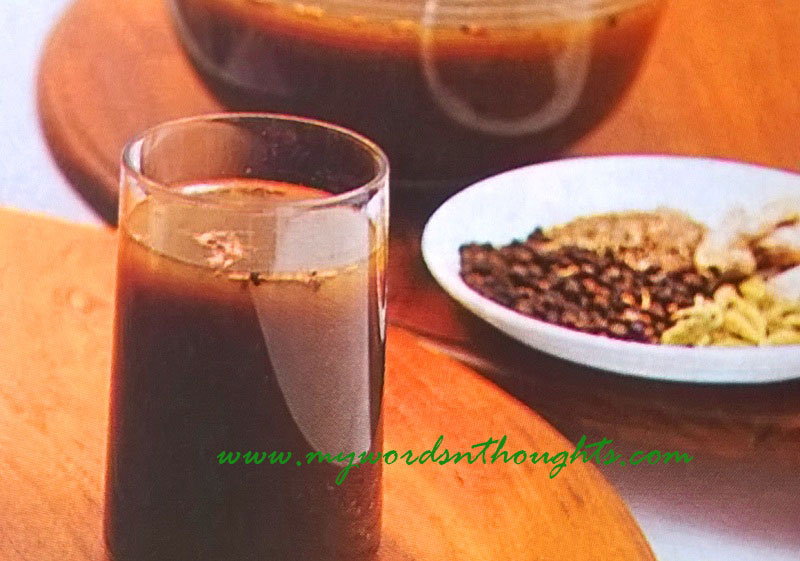
Panakam
Arrow root powder (Koova Podi) is also used as drink for summers. In most cases, people love to grow the plant in courtyard or fields. Nowadays it’s a very rare sight. Arrow root powder available in market is mixed with all-purpose flour (maida), and it’s always better to prepare it at home naturally. At first arrow root (koova) is crushed well, the juice is strained to a container using a thin piece of cloth and later this juice is placed under direct sun and dried to prepare arrow root powder. You can add a spoon or two to boiling water with a little sugar or salt to prepare an excellent drink for hot summer season.
Chukku Kaapi – made using dried ginger and pepper is still popular. It’s seen as a good remedy for cold and related diseases. During festival seasons, many small tea shops are active which also provide this drink at the festival premises. If you are set ready to watch a play or art form at night during temple festivals, Chukku Kaapi can help you to keep sleep and tiredness at bay. During old days, it was a common sight during festival nights, where boys used to carry Chukku Kaapi in containers solely for sale.
Paanakam is yet another popular drink available during Kerala festival seasons. Nowadays it’s rarely seen. Paanakam is believed to be a very popular drink among Hindu gods, as per legends. There is one interesting tale connecting Paanakam with Hindu mythology.
To repent over the act to tie Lord Brahma, Subramaniya took the shape of a snake and took refuge in a forest. Goddess Parvathy got anxious with the disappearance of her son, and she started searching. She also took fasting and performed many rituals (Vritham) for the same purpose. She searched many forests futile, without any result. Seeing the sorrows of Parvathy, Lord Siva instructed her to do Shashti Vritha and then search the son to get positive results. Following Siva’s instructions, she finally found her son at Sahyadri mountain ranges.
To please the goddess, the gods of heaven presented her with different types of offerings. But she was at all happy. Later Saint Agasthya bought Panakam drink, and she got pleased. The other gods also tasted this drink and they liked it. Thus goes the story.
A few instructions are to be followed to prepare this ‘divine’ drink. Paanakam is prepared in earthen pots using fresh water, jaggery and a few shrubs and spices. Sugarcane juice is often used as a substitute for jaggery. The drink is also given in small earthen pots. The drink stays fresh for a maximum of 6 hours without any damage; that’s the only defect. But it’s a very healthy drink. During Makaram, Kumbham and Meenam months, breathing problems and lung congestion are quite common, and Paanakam is very much effective for such health issues.
And here is the recipe of Paanakam – Water, jaggery, dried ginger, cumin seeds, cardamom and pepper are used as ingredients. Water is taken in the measurement of one Idangazhi (around 800 gms) if taken in Para measuring tool. Half kilo jaggery is melted in one idangazhi water. Later it’s strained to remove the dirt which forms a layer on its surface. Take dried ginger, cumin seeds, cardamom and pepper 25 gm each, crush well and added to jaggery solution. The whole contents are transferred to an earthen pot, chilled and served.
During early days, Chakkara Vellam was a common drink in festival maidans. The drink is destined to protect the health and freshness to all those who arrive in the temple premises to participate in the event. Jaggery is added to water, boiled well and cooled. Later cumin seeds and scrapped coconut are added to this solution to prepare the drink. But what a change have we noticed in the recent times! The whole temple premises during festival seasons are filled with carbonated drinks and coloured waters not good for health. Isn’t it?
Cool drink using powdered rice flakes
Aval vellam (a drink prepared using rice flakes) was once given to workers at fields during reaping days. Rice first harvested in the first batch of the process, known as Punnellu is specially used for preparing rice flakes drink. Rice flakes are soaked in water, and jaggery is also added to prepare the drink. To enhance taste, banana and shallots are smashed well using hands and added to it. As per beliefs, people who work in agricultural fields should never feel hunger or thirsty while working under sun during hot summer, and aval vellam is an instant solution which quench thirst as well as suppress appetite. After drinking aval vellam, you can eat the tasty residue of rice flakes which settle down in the container. Many people love it.
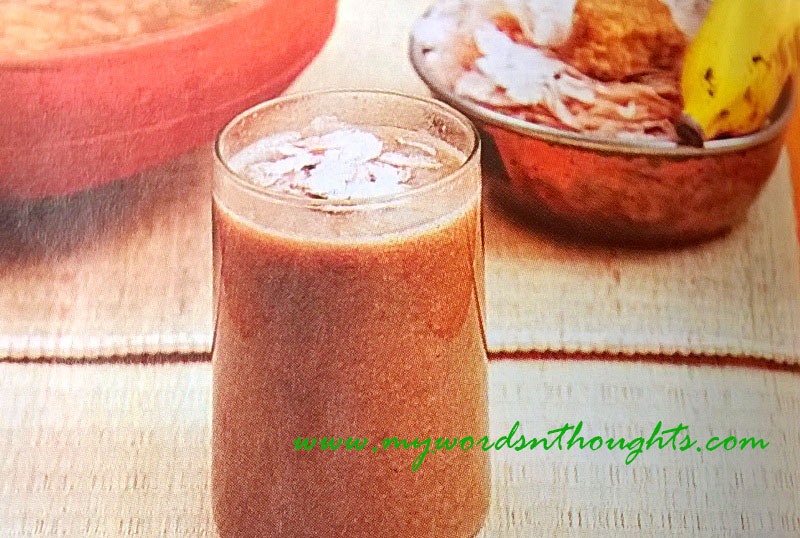
Aval Vellam
Here is the recipe of Aval Vellam: Rice flakes prepared using Kuthari is used for this drink. For 1 cup rice flakes, one small banana (cherupazham/palayamkodan) is needed, and you can add 2 shallots also. But it’s optional. For sweetness, add jaggery as per taste. For preparation, soak rice flakes and jaggery in sufficient water for two hours. Blend the banana using hands, crush shallots and mix well with rice flakes solution. Allow the contents to settle for a while, before you drink.
Let me share something interesting from my childhood memories. When you provide rice starch water (kanji vellam) to a worker, you should put a little cooked rice too, at least for a few people. Otherwise it may result in their displeasure. As a child, I had once gone through such strange experience as I was ignorant of it. But those old days of scarcity has gone, and the habit to drink rice starch water. Now rice food is also substituted by wheat to some extent. Everyone is under the grip of life style diseases, and not even the lower class is completely free from it.
What else? What are other local summer drinks? Summer is the season of cool water melons. The whole flesh of water melon can be transferred to a bowl, add a little sugar and lime juice and mix well, and serve it as a cool drink for the season.
There is one interesting, yet popular story related to water of a well. As per legend, a group of people from Kothazhath drank some water from a well after eating gooseberry, and when it turned sweet they misunderstood it to be the sweetness of water of that well. The interesting tale goes like this. The foolish people tried to take the ‘sweet’ well along with them to their home town. Whatever it is, it can’t be denied that well from our courtyard owns water with a special taste and chillness, and if you drink it soon after sweating in fields, what to say more!
Rice starch water only till noon
Grandmas often say, after noon never drink rice starch water (Kanji Vellam) with salt. Drink only water adding dried ginger or Karingali. They often have a habit to put ramacham or basil leaves in traditional water vases (kooja) in the evening along with water to drink the next day. It’s said that gold is present in basil leaves. Yet they suggest never adding same ingredients to drinking water for a long time. It’s advisable to try different types of drinks and products. Barley, Aymodakam, Kothambalari, Pathimugham etc can be used alternatively.
What are other natural summer drinks?
Put a few fenugreek seeds in drinking water overnight. Crush it well using hands next day morning. It can be served with a little coconut milk and jaggery. Use cumin seeds or dried ginger to prepare drinking water for evening snack. Boiled tapioca or jackfruit could be the best combo.
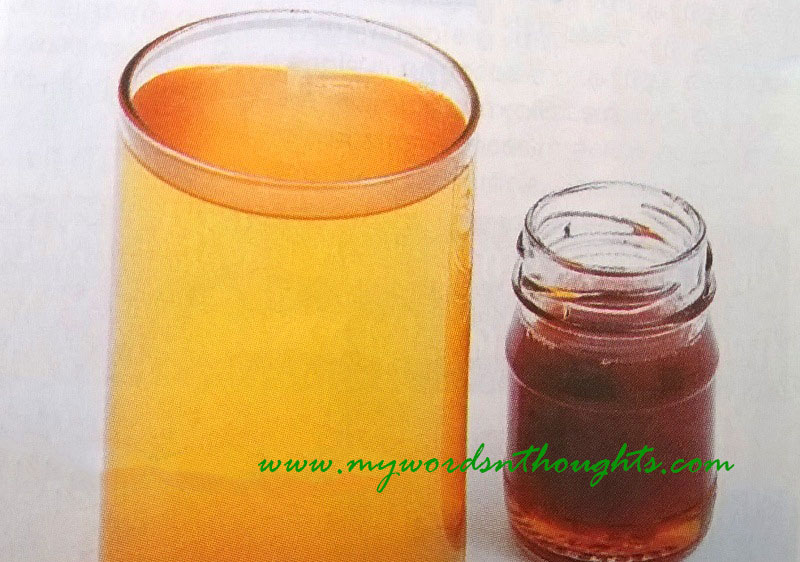
Then Vellam
There are a few grandma remedies for heat prickles as well. Drinking plenty of coconut water is an instant solution. Also, apply coconut water on affected areas of body. Coconut milk, jaggery and cardamom granules – they can be together boiled in water to get a delicious drink. For Sabarimala pilgrims, a drink using tender coconut water is prepared adding puffed rice (malar) powder. It gives the same effect of glucose, and helps them to easy climb the steps and have long walk to temple.
Make a fine paste of Muthari and prepare drinking water adding jaggery, and it holds many medicinal values. For inflammation related to cold (neerkettu), roast a few seeds of fenugreek and cumin and add water to it. Boil it well and serve as a drink. Crushed coriander can be used to boil water, for a patient suffering from chickenpox and measles.
During periods, jasmine flowers are put in water overnight and next day morning, serve as a drink. Water is kept only in earthen pots, and flowers are smashed using hands next day morning. Nellikkaasavam is prepared using gooseberry before summer arrives, and stored in containers. Equal amount of water is added just before it is served as a drink. These were some of the drinks used by our ancestors, to fight and resist hot summer. Sadly most of them have already disappeared from the scene.
Honey water is a quick drink for hot summers, and here I provide its secret recipe of drink, locally called Then Vellam. Ingredients required – 1 glass water, honey as per taste, ginger juice 1 small spoon and lemon juice 1 big spoon. Mix all the ingredients together to get this delicious drink.
Cashew fruit juice – Yet another variety drink for hot summer
Summer season is the season of cashew fruits too. When kids gather around cashew nut trees to collect cashews, they pick cashew fruits too. A few kids really love the fleshy cashew fruits, which are enough to fill empty stomach. The juice can be extracted by squeezing and add a little rice starch water. The stain of fruit gets deposited at the bottom. The juice can be strained and used as a local drink for summer. Similarly, split raw cashew nuts into two and extract the nuts, make a fine paste of them, mix with water and sugar to prepare a royal cashew drink for summer.
Make a fine powder of cinnamon, pepper, cloves and dried ginger. Boil water using this powder and strain it. Roast sliced onions and an egg in a little ghee and add to this solution to prepare Kaava drink. It’s a traditional drink used by Muslims, which is served as a quick remedy for sour throat, while reading Quran for long hours. It protects throat and is also used as a drink to quench thirst. Thari Kanji and Paal Vaazhakka (Milk Banana) are delicious items prepared by Muslims during fasting days of holy month.
Pure honey mixed with a little water, or along with a few drops of lemon juice added – an excellent but simple drink for this hot summer. Why can’t you try it today?
Also read a few more posts related to Kerala cuisine. Here is the page link. Click on the images to read



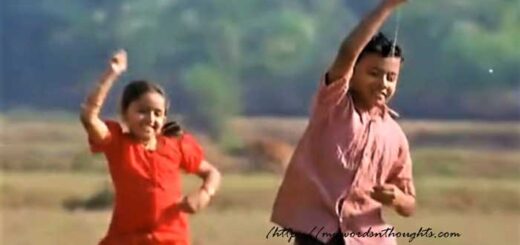











Recent Comments